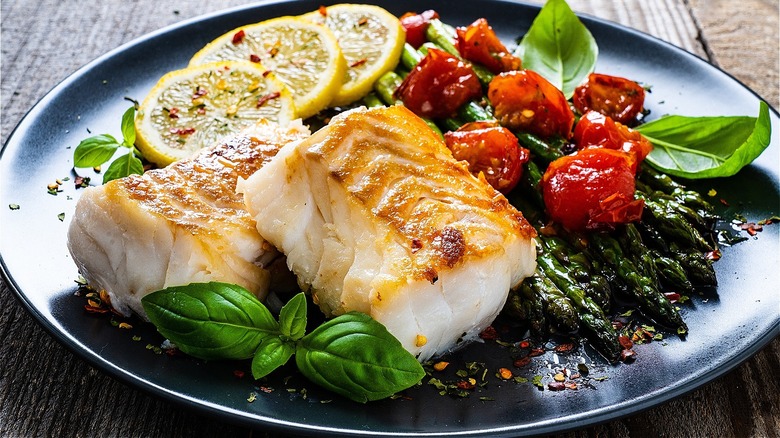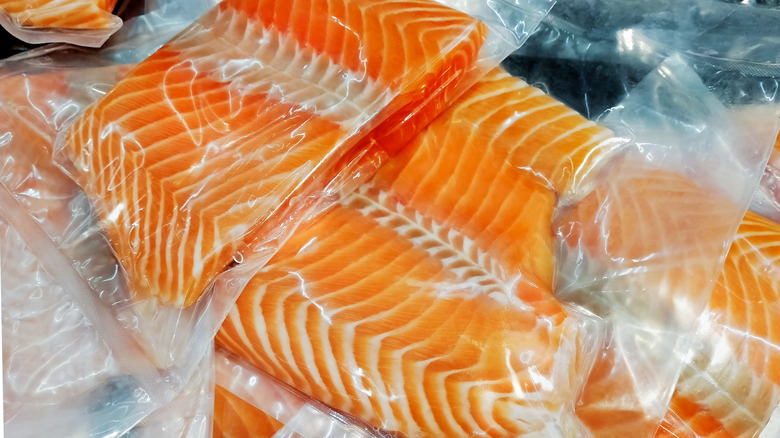What The Label On Your Frozen Fish Really Means
Peruse the frozen fish aisle and you'll notice quite a few labels, claims, and terminology like "wild caught" versus "farm-raised," "sushi grade," "refreshed," or "previously frozen." Some of these terms are useless: "Sushi grade," for example, means nothing — it's an unregulated claim. But others can help you make smart decisions about your seafood consumption, whether you're hoping to eat more sustainably, lower your risks of food poisoning, or just find the best-tasting frozen fish to use in your favorite recipes.
When it comes to frozen fish, there are a few key terms you'll want to look out for: "fresh frozen," "frozen fresh," "quickly frozen," and "flash frozen." Per the Code of Federal Regulations, if a frozen fish is branded as "frozen fresh" or "fresh frozen," it means the fish was frozen while still considered fresh. However, this is totally different from the interchangeable terms "quickly frozen" and "flash frozen." So, what's the difference and why should you care?
Fresh frozen vs. flash frozen
The United States government regulations for determining whether food is "frozen fresh" or "fresh frozen" are vague. To satisfy the law, the fish has to have been frozen while still fresh, after a recent harvest. Who's to say how recently harvesting occurred? Who's to determine how long fish can be considered fresh? When fish is flash-frozen, it means something very specific.
Flash-freezing freezes an item quickly and at a very low temperature, preserving it so it's as close to fresh as possible once it's thawed. When fish are flash-frozen, it generally happens immediately after harvest. Because of this standardized procedure and specific mode of freezing, most will find "flash-frozen" or "quickly frozen" fish to be of a more reliably higher quality than other types of frozen fish. Today's Farmed Fish claims that flash-frozen fish are both superior to fresh fish and safer to eat, as the flash-freezing process eliminates all the deterioration that would occur while fresh fish is waiting to be sold or consumed.
Additionally, flash-frozen fish is more sustainable than fresh, as cooking flash-frozen fish eliminates food waste resulting from fresh fish potentially going bad. One-third of fresh seafood sold in grocery stores gets thrown out after two days of not being sold. Furthermore, flash-frozen fish can be shipped using more sustainable methods than fresh fish, which must be flown to its destination. Next time you're shopping for fish, skip fresh, skip frozen fresh, and go straight for flash-frozen.

